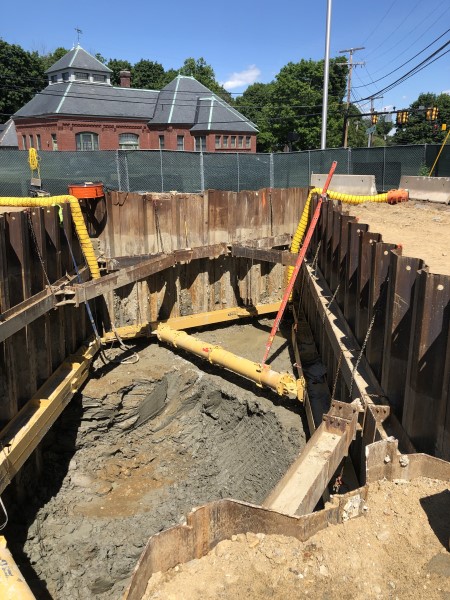Petroleum Remediation
Overseeing the long-term remediation of petroleum-contaminated sites.
 Remediating and monitoring the impacts of petroleum releases, where contaminants concentrations exceed the established state standards for soil and groundwater, is essential to protecting the environment, as well as the health and safety of individuals living or working on or near petroleum-impacted properties. Each year NHDES encounters approximately 140 new petroleum-contaminated sites. Even when a rapid initial response to a new release is possible, petroleum spills may still result in residual soil and groundwater contamination with the potential to render drinking water and indoor air unsafe.
Remediating and monitoring the impacts of petroleum releases, where contaminants concentrations exceed the established state standards for soil and groundwater, is essential to protecting the environment, as well as the health and safety of individuals living or working on or near petroleum-impacted properties. Each year NHDES encounters approximately 140 new petroleum-contaminated sites. Even when a rapid initial response to a new release is possible, petroleum spills may still result in residual soil and groundwater contamination with the potential to render drinking water and indoor air unsafe.
Identifying the extent and concentration of petroleum impacts through sub-surface site investigation is a key first step in detecting the presence of remaining petroleum contaminants and determining an appropriate remedial approach for their removal. The goal for every petroleum impacted site is to ensure that once remediation is complete all site soils meet the New Hampshire Soil Remediation Standard, and all groundwater meets the Ambient Groundwater Quality Standard for contaminants associated with the release. With public awareness and concerns regarding water quality at an all-time high, the mission of the NHDES Petroleum Remediation Section has never been more critical.
The Petroleum Remediation Section oversees the investigation, remediation and long-term monitoring at petroleum-contaminated sites to ensure compliance with NH Administrative Rules and Statutes. Site investigation, remediation and contaminated media (groundwater, surface water, soil and air) monitoring are performed in accordance with NHDES’ Contaminated Sites Management rules, Env-Or 600 and the agency’s Risk Characterization and Management Policy.
The petroleum remediation process follows a six-step process: Notification, Initial Response, Investigation, Remediation, Groundwater Monitoring and Site Closure.




